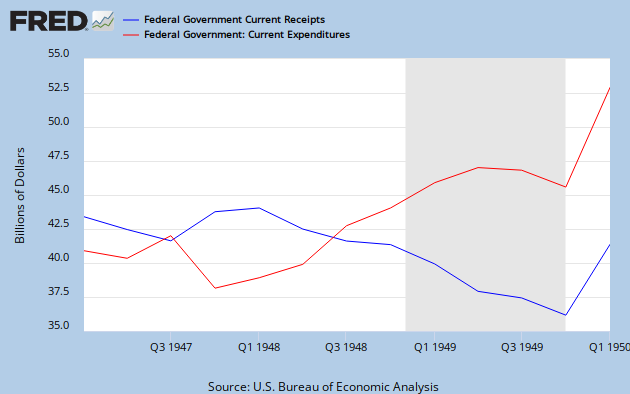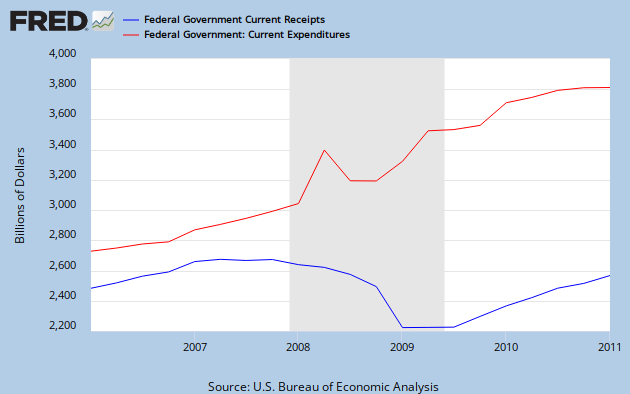Many people understand that a government can not just print and spend money for most of its expenses or you get hyperinflation like Zimbabwe did when they tried it. In fact, many people think Zimbabwe was stupid to even try that.
Many people realize that the Fed creating money and handing it to the US government for bonds is uncomfortably close to Zimbabwe's situation. So many are expecting that this Quantitative Easing will stop. However, there is a puzzle as to who else would put $100 billion a month into US government debt.
One popular theory is that banks will borrow money at 0.25% from the Fed and buy US government bonds at higher rates like 1.5% for 5 year bonds. So the theory goes that the banks are funding the government, not the Fed. This is foolish as it is really still newly created money from the Fed that is funding the government.
People think that Zimbabwe just printed money and spent it. But Zimbabwe had a central bank that financed the government just like the US. At some point it became clear that the "loans to the government" were just an accounting fiction and what was really going on was they were printing money and spending it. The same will become clear in the US. At some point in the future people will think the US was stupid to try it.
Hyperinflation is that transition period when a paper money is clearly failing as a store of value but has not yet died as a medium of exchange. This blog is to look at this and any other interesting economic issues. Vincent Cate
Tuesday, June 14, 2011
Saturday, June 11, 2011
Is Debt Situation Like After WWII?
There is an interesting paper that claims the way debt was brought under control after WWII was "financial repression". The idea is that government debt levels after WWII were about what they are now and the way they were brought under control was by government controlling private finance and inflation. The expectation is that austerity and hyperinflation are less acceptable choices, so we should expect governments to use financial repression to flece their populations.
This basic theory is bogus. The main reason governments were able to cope with such high debt levels back then is that the high spending levels generating the high debt were due to the war. Back then more than 3/4ths of the government budget was for the war so it was easy to cut government spending in half once the war was over. Once the spending problem was solved the debt level was not a killer.
Today there is no equivalent way to cut government spending in half like there was after WWII. Today most of the budget is mandatory spending. So even though the US debt level is comparable to after WWII, the US debt level now is a far more difficult and dangerous situation than it was back then.
Investors after WWII understood a history of hundreds of years of gold and silver money. They did not have much understanding of paper money and inflation. Back then many could be fooled into owning government debt that paid an interest rate lower than the inflation rate. After the high inflation of the 1970s investors understand inflation better. Today, with the Internet, word would get around very fast. There is just no way that same trick used in "financial repression" could work for 30 years now like it did back then.
FredGraph does not go back before 1947 for government receipts and expenditures. But here is 1947 to 1950:
The government had expenses of less than $40 billion and income of over that. If the US government today had budget surplus then the debt situation would be comparable. However, it has a huge deficit and no credible plan to get it under control, so the situation is very different.
This basic theory is bogus. The main reason governments were able to cope with such high debt levels back then is that the high spending levels generating the high debt were due to the war. Back then more than 3/4ths of the government budget was for the war so it was easy to cut government spending in half once the war was over. Once the spending problem was solved the debt level was not a killer.
Today there is no equivalent way to cut government spending in half like there was after WWII. Today most of the budget is mandatory spending. So even though the US debt level is comparable to after WWII, the US debt level now is a far more difficult and dangerous situation than it was back then.
Investors after WWII understood a history of hundreds of years of gold and silver money. They did not have much understanding of paper money and inflation. Back then many could be fooled into owning government debt that paid an interest rate lower than the inflation rate. After the high inflation of the 1970s investors understand inflation better. Today, with the Internet, word would get around very fast. There is just no way that same trick used in "financial repression" could work for 30 years now like it did back then.
FredGraph does not go back before 1947 for government receipts and expenditures. But here is 1947 to 1950:
The government had expenses of less than $40 billion and income of over that. If the US government today had budget surplus then the debt situation would be comparable. However, it has a huge deficit and no credible plan to get it under control, so the situation is very different.
Subscribe to:
Comments (Atom)

